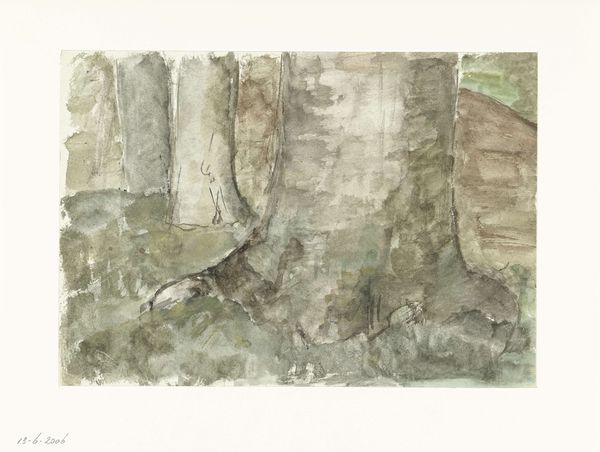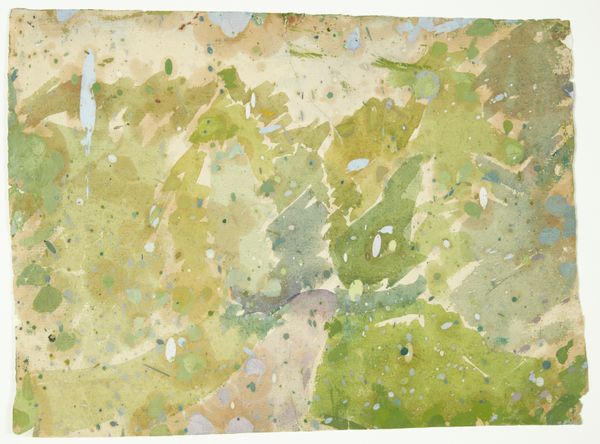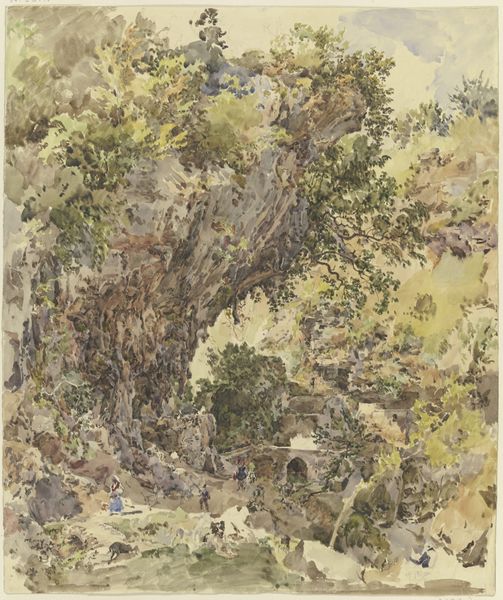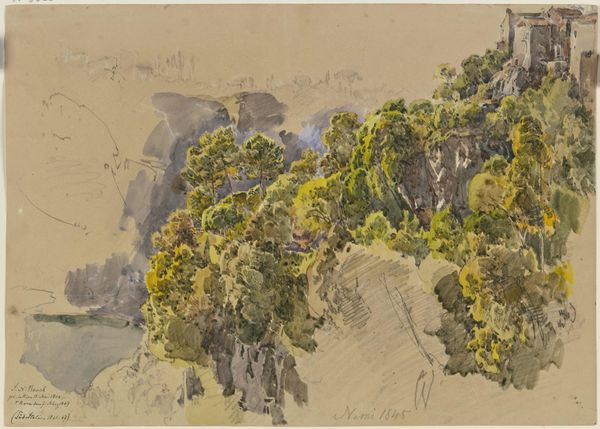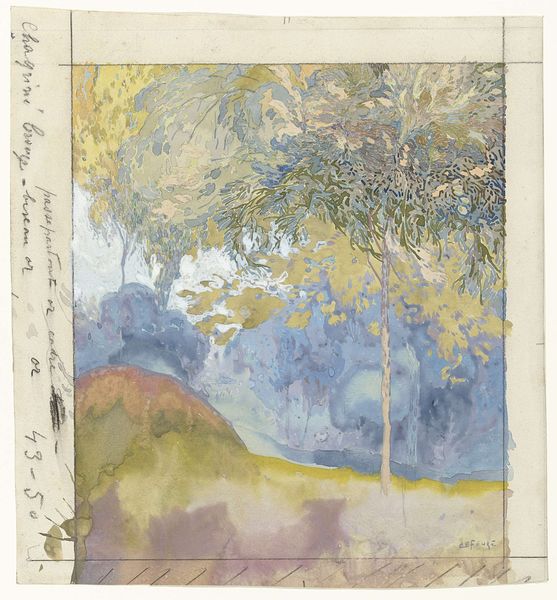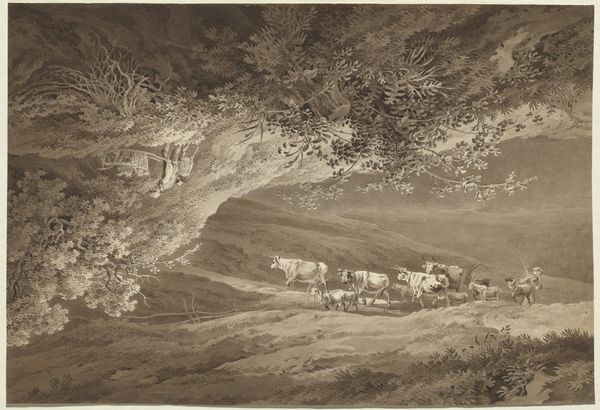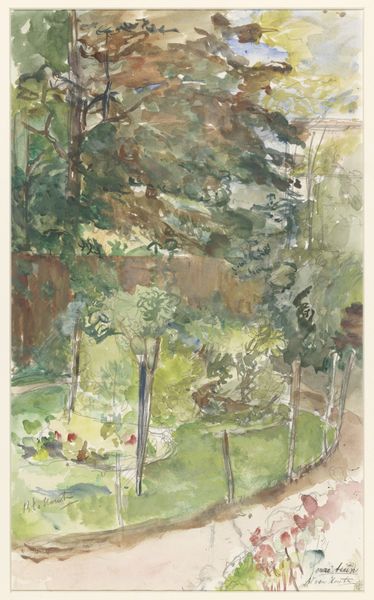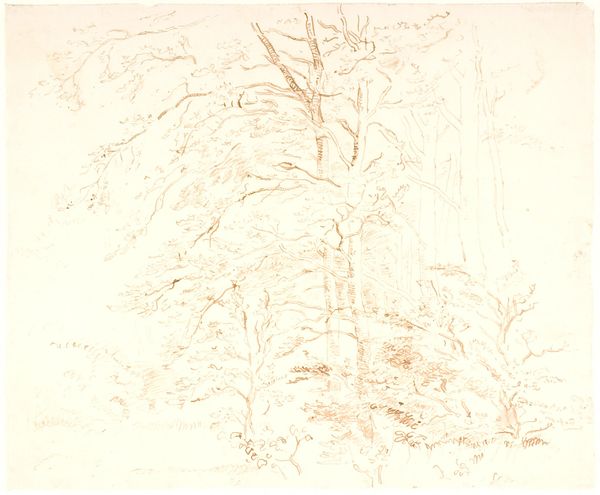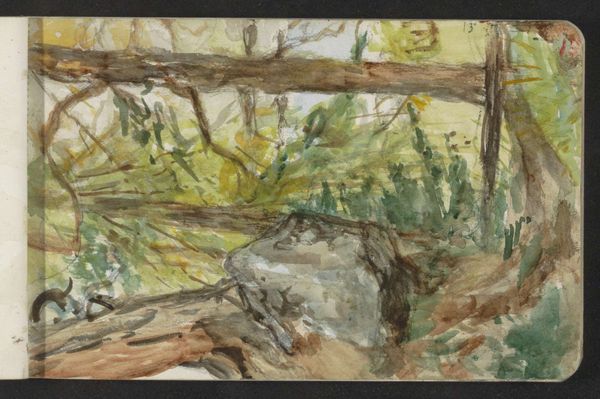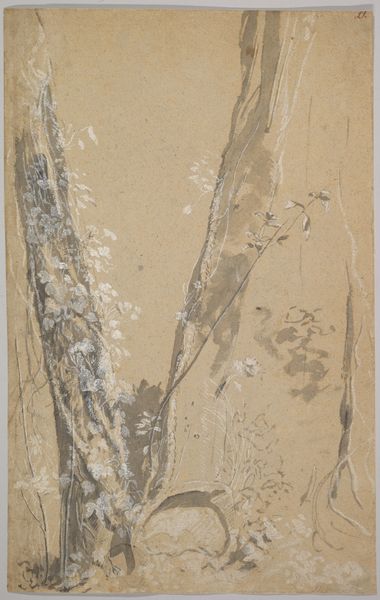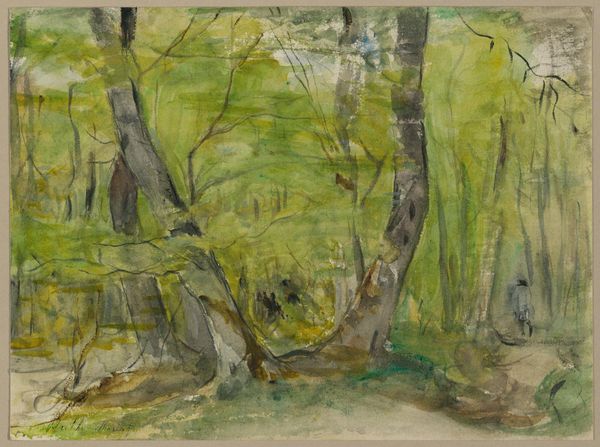
Copyright: Public Domain: Artvee
Editor: So this is Jacek Malczewski's "Landscape motif from Rozdół", created around 1884. It looks like it's done in watercolor, maybe even plein-air, and it feels incredibly immediate, almost like a fleeting impression. What strikes me most is how dark and overgrown it appears. What do you see in this piece? Curator: I see a powerful dialogue between light and shadow, one that speaks to the Romantic fascination with the sublime and the overwhelming forces of nature. Rozdół itself, as a location, might hold symbolic weight for Malczewski, perhaps connected to personal memories or cultural narratives of his time. The darkness you perceive, is it fear, awe, or perhaps something else? Editor: I think it's more awe, or maybe a sense of nature's indifference? There's a wildness that's almost… foreboding. Curator: Consider how the rapid, expressive brushstrokes might evoke the untamed aspects of the Polish landscape. The "wildness" is a key element of Romanticism, that almost challenges the idea of the idyllic or easily tamed countryside. Does it perhaps speak to the complicated relationship Poland has with its landscape during that era of occupation? Editor: That’s interesting; I hadn’t considered the historical context. It makes the landscape feel less neutral, almost charged with meaning. Curator: Exactly! It could be viewed as more than just a scene; the density and perceived darkness are symbolic of resilience. This invites a broader reading tied to collective memory and continuity of Polish culture. What will you remember about this artwork? Editor: Definitely the historical context and how a seemingly simple landscape can be a powerful carrier of cultural memory. Curator: Indeed, symbols and cultural memory can shift depending on where we are and the images we hold as reference points. Thank you for helping me to think differently.
Comments
No comments
Be the first to comment and join the conversation on the ultimate creative platform.
